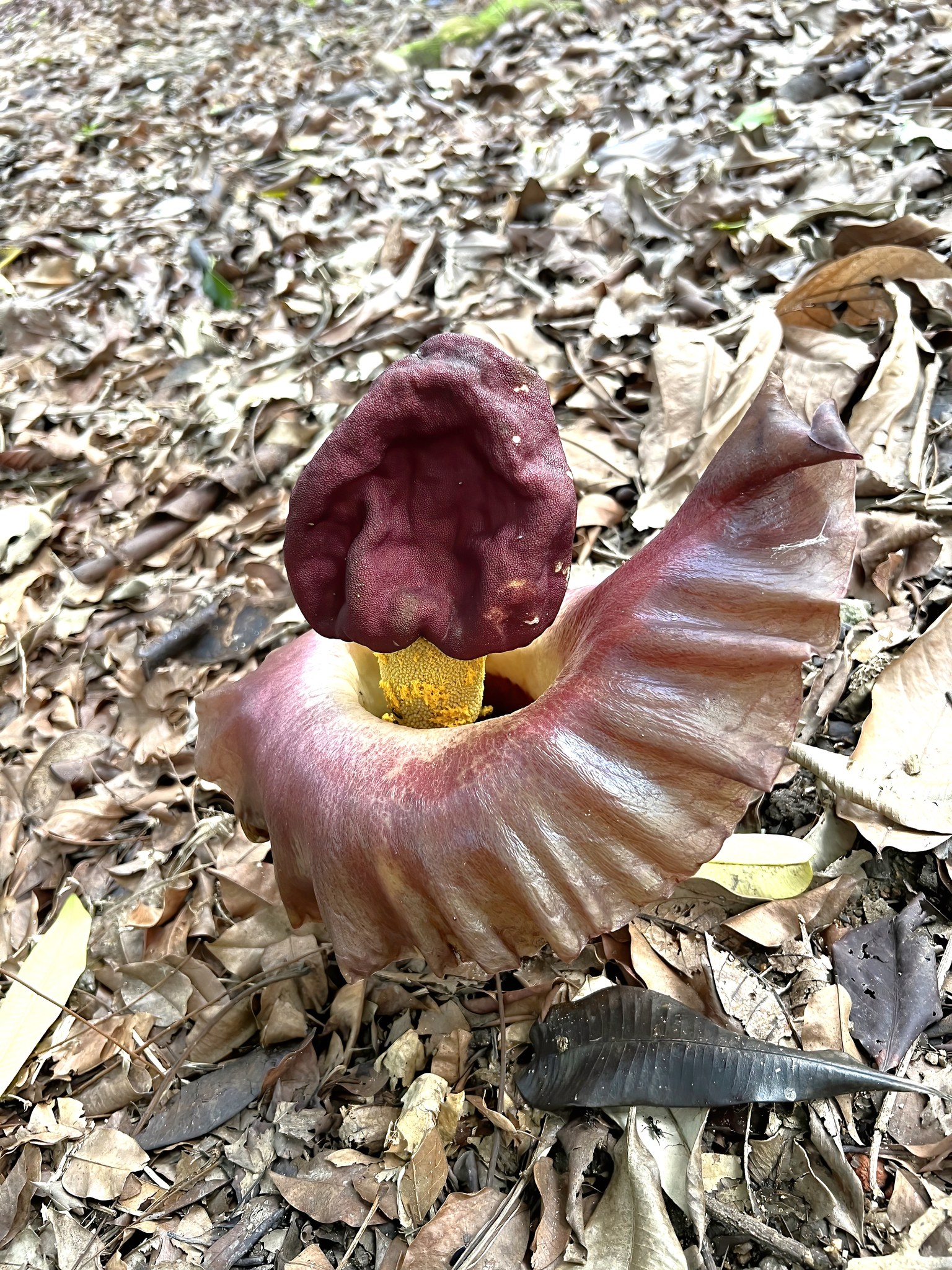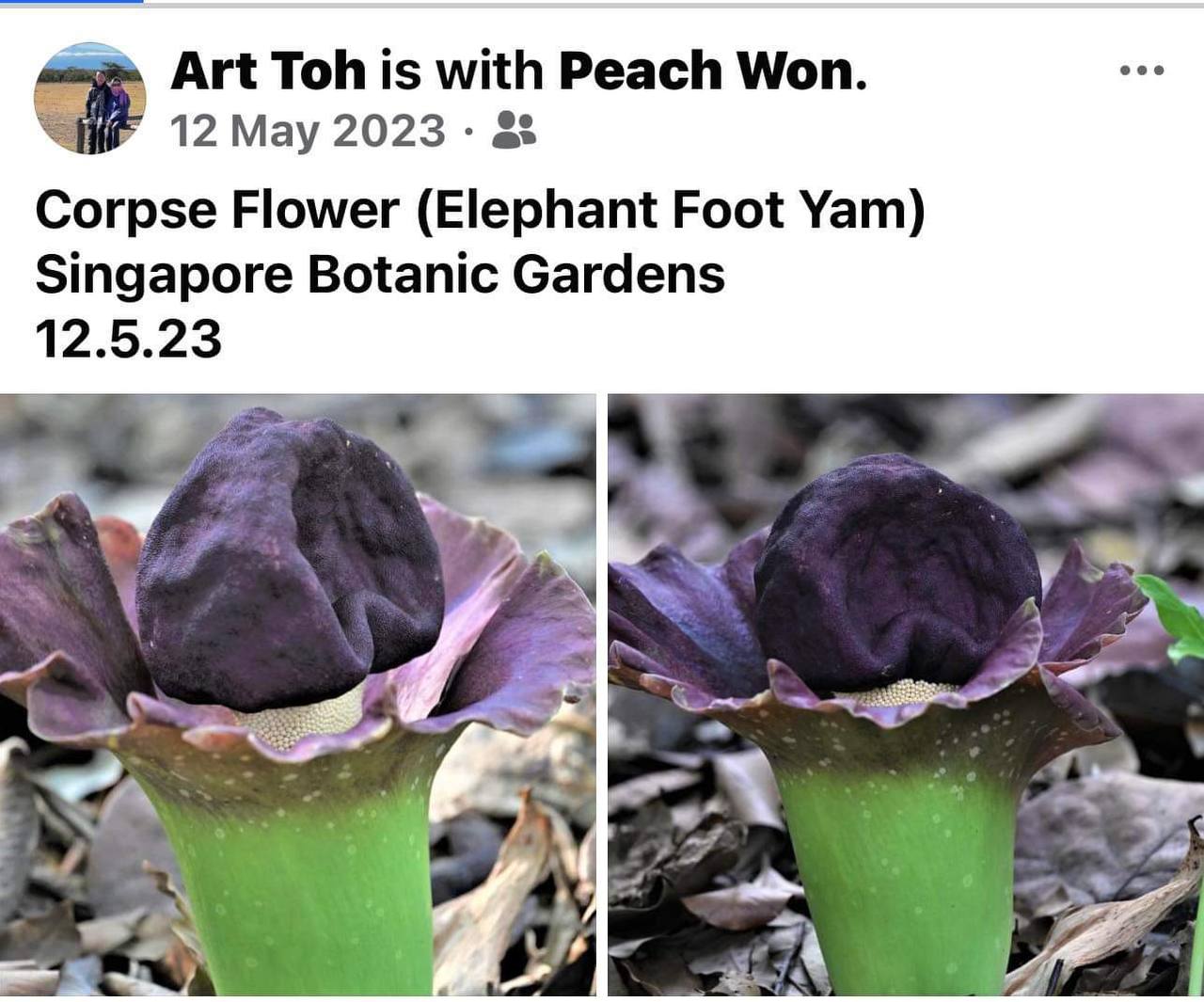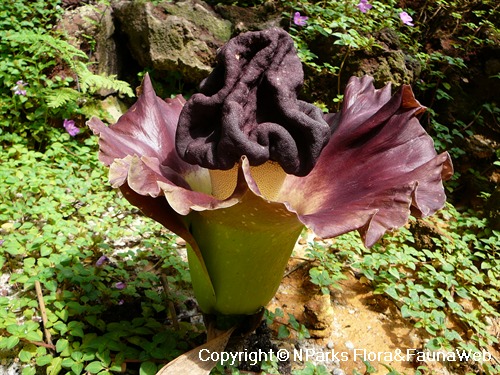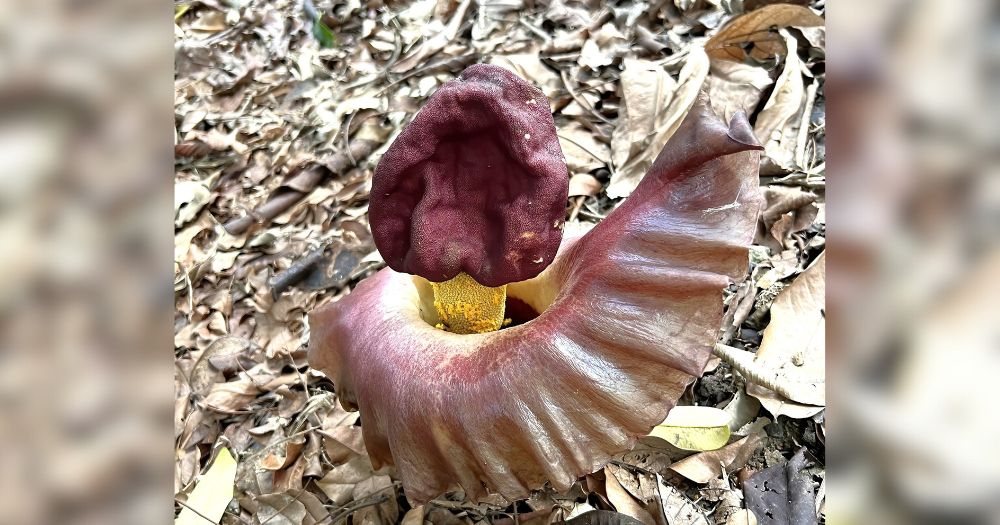On Jun. 10, 2024, Facebook user Art Toh shared a photo of a rare corpse flower in bloom in the Nature Society Singapore Facebook group.
This is not the first time the corpse flower has been spotted blooming in Singapore, although these occurrences are few and far between.
A rare sight
The flower appeared to be taking on a quiet existence when spotted by Toh at the Singapore Botanic Gardens.
Speaking to Mothership, Toh remarked that the flower did not have a smell, which is atypical of usual accounts of the corpse flower. The plant typically emits a foul odour.
Toh described the flower to be the size of an "A4 paper", which is about 30cm.
The corpse flower appears to be in the late blooming stage, and Toh speculated that it will wilt in the next couple of days.
 Photo from Art Toh/Facebook
Photo from Art Toh/Facebook
The last time the corpse flower was sighted blooming was a year ago.
According to The Straits Times, the same corpse flower was last reported to be in full bloom in the Singapore Botanic Gardens in March 2023 .
In a separate Facebook post, Toh also shared that he had caught the flower's bloom on May 12, 2023.
 Screenshot from Art Toh/Facebook
Screenshot from Art Toh/Facebook
Previous sightings
When blooming in its full glory, the corpse flower's pungent smell of decaying meat can be overpowering.
It has attracted not only its insect pollinators, but also fascinated onlookers on a couple of occasions.
Other than the Singapore Botanic Gardens, the flower was even spotted in a residential area.
In 2021, its notorious smell gave its presence away at an inconspicuous corner at the foot of a Housing & Development Board (HDB) block in Sembawang.
The plant was then reportedly chopped off and mysteriously vanished. Its roots were subsequently relocated to a gated community garden to be protected.
More about the corpse flower
The corpse flower's scientific name is Amorphophallus paeoniifolius.
It is also commonly known as the elephant foot yam plant.
It does not have an annual blooming cycle, and its blooms are unpredictable and short-lasting.
According to the National Parks Board (NParks), the corpse flower can reach 40 to 50cm tall, and 30 to 40cm wide.
The inside of the flower is usually dark brown to maroon, and its pale green exterior is flecked with white spots.
 Photo from NParks
Photo from NParks
When blooming, the flower emits a putrid odour likened to decomposing meat.
This smell aids the plant in attracting insects such as carrion flies and beetles, which act as pollinators for the plant.
The plant eventually bears berries that mature from green to bright red, which attracts other animals such as birds and squirrels.
Aside from its foul-smelling characteristic, the corpse flower also has a number of medicinal properties.
After drying its tubers, it can be used to medicinally relieve piles, digestive problems and dysentery.
Its fresh roots can also be used as expectorant, which helps clear mucus from our airway.
Additionally, its leaves and leaf stalks can be cooked and eaten as vegetable.
However, NParks advises that all plant parts should be thoroughly cooked in order to break down irritants such as calcium oxalate crystals, which can cause stinging and burning.
People with rheumatism, arthritis, gout, kidney stones and hyperacidity should also exercise caution when consuming the tubers.
Top photo from Art Toh/Facebook
If you like what you read, follow us on Facebook, Instagram, Twitter and Telegram to get the latest updates.



